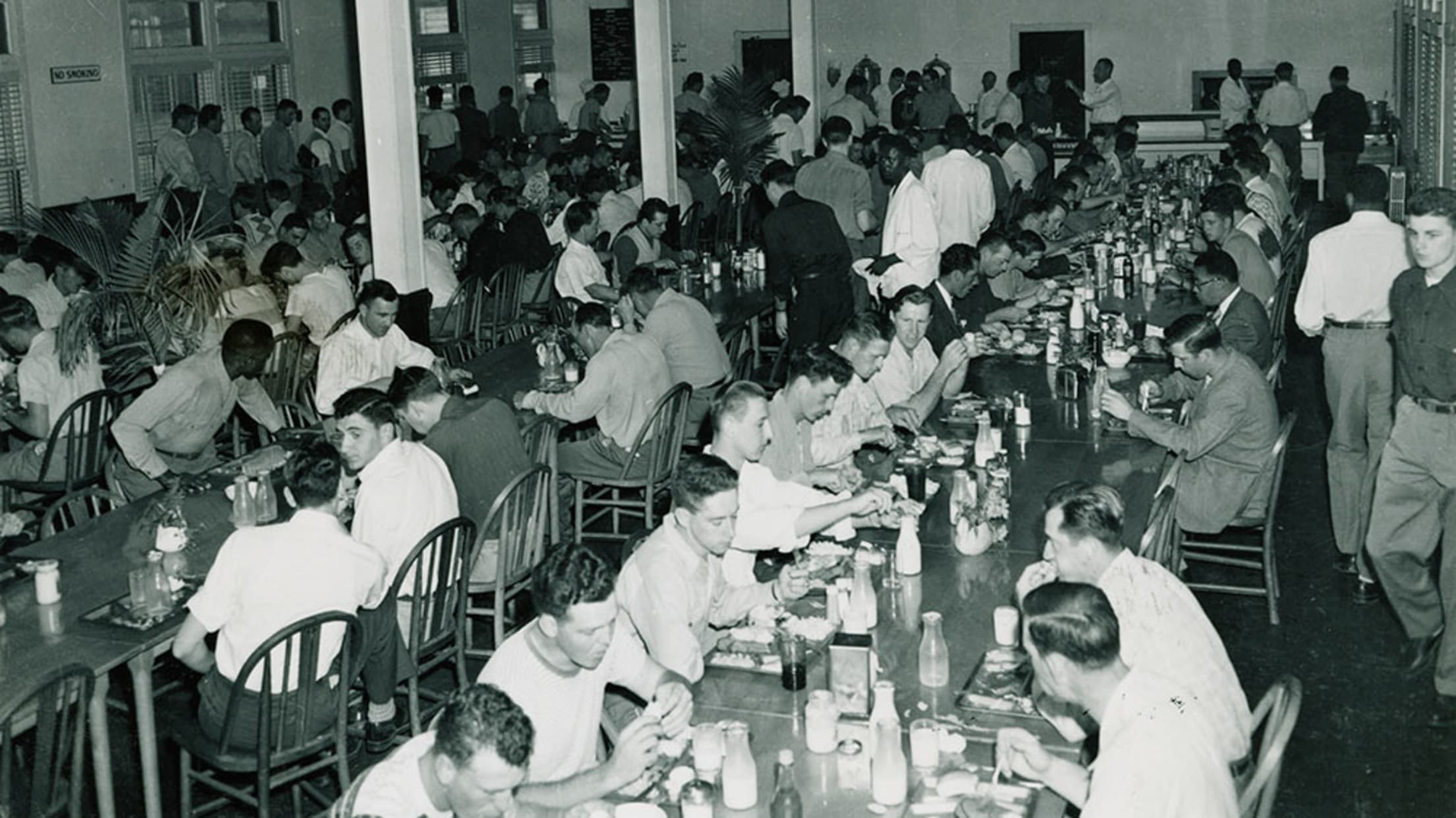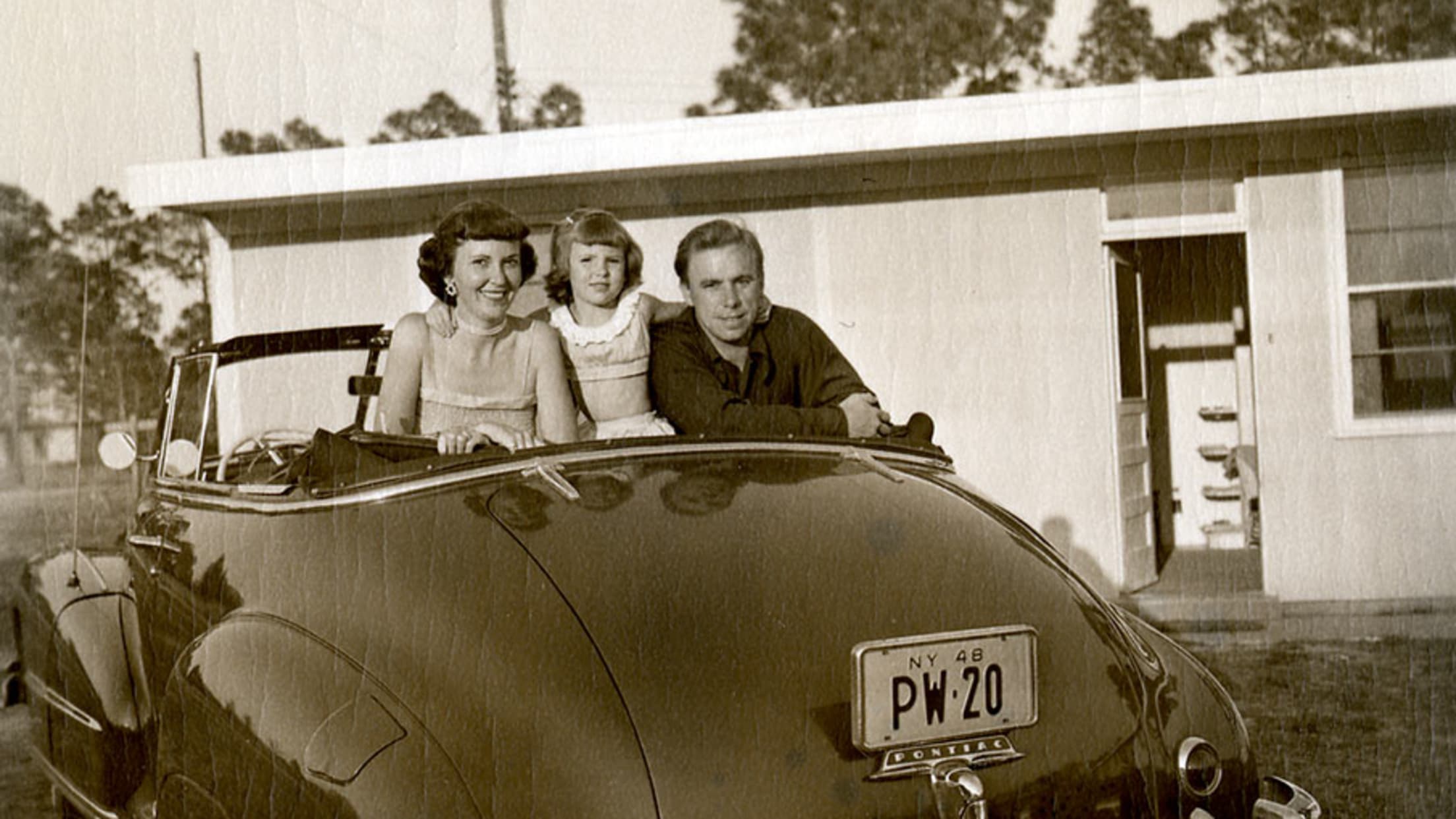1951
January 3, 1951
The Dodgers announced the major league club would work out at Dodgertown from February 18th until March 9th. After that date, the major league club would re-locate to Miami where they would play 19 exhibition games, 16 of those games at night. 1
February 28, 1951
Dodger Vice President Fresco Thompson talks of the one training camp idea, implemented by Branch Rickey. "It is the only way," said Thompson. "It has advantages over any other set-up. First, having all the farms together enables the managers and coaches throughout the system to get a good idea of any men they have to handle later in the season. Second, it affords us a fine standard of comparison for boys moving up in the chain….Third, Vero Beach saves us enormous amounts of money, not only in the communal style of lodging and eating there, but in transportation. Transportation is, as it stands, the biggest item in running the camp. But if we had a number of minor league camps scattered here and there we would be perhaps doubling our transportation expenses in shifting boys from here to there." 2
March 7, 1951
Walter O'Malley discusses his intention to invite former Hall of Fame New York Giant player and manager Bill Terry to Dodgertown for Spring Training. "I grew up as a Giants fan," said O'Malley "and I always regarded Bill Terry as my favorite ball player. Bill's living at Jacksonville and I'm going to invite him down to Vero Beach. Once he gets there, he will begin helping out." 3
March 7, 1951

High praise comes from players and writers regarding the dining room at Dodgertown for the 1951 Spring Training season. Sportswriter Joe King writes, "The dining room, run by the Harry M. Stevens Co, at no profit, is one of the most exclusive and higher quality beaneries on the coast. None but players, press and front office muck-a-mucks are fed, with services which could not be approached even in the swank hotels of the country…..Daily to-order items on the menu are loin lamb chops, calves liver and broiled chicken, as well as the steak…On the 'ready' list from night to night are roast beef, roast leg of lamb, chicken chop suey, veal cutlet, roast fresh ham, spaghetti Caruso and French lamb stew. Fish specialties, trucked in from a fashionable old-line firm in Palm Beach, includes shrimps daily." 4
March 7, 1951
Dodger Manager Charlie Dressen told sportswriter Jimmy Burns of his plans to commute from Vero Beach to Miami for Dodger exhibition games. The Dodgers are scheduled to play 14 night games of 18 exhibitions in Miami so the flight commute of Dressen will allow him to see minor league games during the day and then manage the Dodgers in the night game in Miami. "We have our own private plane," said Dressen, "I think I can make good use of it by flying back and forth between the two camps." 5
March 7, 1951
Marine officers made an inspection visit for three days to Dodgertown in Vero Beach, Florida. The baseball Spring Training base was formerly a training site for aviation personnel in World War II and the military was reviewing potential site because of the Korean conflict that begin in July, 1950. 6
March 7, 1951
The Dodgers announced they had begun a working agreement with the Caracas club in the Venezuelan Winter League. This is the first definite agreement between a major league club and a winter league club. The Dodgers have agreed to provide nine players each winter league season to the Caracas club. The Caracas club would permit the Dodgers to select the winter league manager for the team. 7
March 14, 1951

Dodger shortstop Pee Wee Reese was good at marbles as a youngster, earning his nickname, but showed a good touch on the golf course. Reese won the Dodger players golf tournament with a gross low score of 78. 8
March 14, 1951
Walter O'Malley poses alongside a "cricket cradle" that will help ball players sharpen their reflexes. The instructional device appears to be a misshapen coffee table so that when players throw the ball across the table to each other, the trajectory of the throw will be random and force the fielder to react to the strange angle. Branch Rickey read about the idea in the summer of 1950 when he was with the Dodgers and ordered six models for Dodgertown. In the fall of 1950, Rickey sold his Dodger stock and became the general manager of the Pittsburgh Pirates. Each "cradle" has a label "Made in England." 9
March 19, 1951
In the first of only two exhibition games to be played at Dodgertown in Vero Beach, Florida, the Dodgers defeat the Philadelphia Athletics, 5-1 beofre 3,248 fans. The Athletics had a new manager for the first season in 51 years as Jimmy Dykes took over as manager for owner Connie Mack. The Vero Beach High School band provides music and before the game, acting Mayor Lewis Berger of Vero Beach welcomes the crowd and introduces Dodger President Walter O'Malley. The new Dodger President then introduces baseball legend Connie Mack, owner of the Athletics. 10 The proceeds from the exhibition game were donated to the city of Vero Beach. 11
March 24, 1951
Jackie Robinson is offered a job as the manager of the Dodgers' AAA minor league when his playing days are completed. "Jackie told me that he would be delighted and honored to tackle this managerial post," said Dodger President Walter O'Malley. "He told me that he always held a soft spot in his heart for Montreal and so do I. I'm sure than when and if this promotion materializes, Montreal would gladly welcome Robinson's return. It's something that he can keep in mind because every star feels greatly relieved when he knows he might get a chance at a manager's job when his playing ability decreases." According to O'Malley, Robinson said, "It's like a wonderful dream." 12
March 28, 1951
Walter O'Malley hosts his first Dodger St. Patrick's Day party at the Sea Gull Hotel in Miami, Florida. O'Malley invites officials of the New York Giants, including Vice President Chub Feeney and Pete Stoneham, son of owner Horace Stoneham, to his gala on the beach. The press corps from New York, Brooklyn and Miami, as well as umpire Jocko Conlan were among the invited guests. Monsignor William Barry of St. Patrick's Church in Miami Beach cut a decorated cake stating, "Welcome Irishmen." Mrs. May Smith, the widow of John L. Smith and a stockholder of the Dodgers, also attended. 13
March 29, 1951
Dodger scout Andy High taught bunting practice for pitchers and turned the drill into a game. High had the groundskeeper draw circles on the infield grass for optimum bunting territory beyond home plate. The pitcher with the most bunts inside circles was to be awarded a prize. 14
November 25, 1951
A travel writer for the New York Times writes an article of the many enjoyments of the town of Vero Beach, Florida. C.E. Wright wrote "Best known to many Northerners as "Dodgertown", the training quarters of the Brooklyn Dodgers, Vero Beach has had its share of attention of baseball writers since 1948 when Branch Rickey, who then headed the Dodger organization, selected this city as training grounds not only for the Dodger team but for its many minor league affiliates. The training camp has facilities for 700 to 800 ball players in a former naval air station and is said to be the largest baseball school in the world." 15
1 ^ Dan Daniel, The Sporting News, January 3, 1951
2 ^ Joe King, The Sporting News, February 28, 1951
3 ^ Ward Morehouse, The Sporting News, March 7, 1951
4 ^ Joe King, The Sporting News, March 7, 1951
5 ^ Jimmy Burns, The Sporting News, March 7, 1951
6 ^ The Sporting News, March 7, 1951
7 ^ The Sporting News, March 7, 1951
8 ^ The Sporting News, March 14, 1951
9 ^ Les Biederman, The Sporting News, March 14, 1951
10 ^ Gus Steiger, New York Daily Mirror, March 20, 1951
11 ^ The Sporting News, March 28, 1951
12 ^ Montreal Standard, March 24, 1951
13 ^ The Sporting News, March 28, 1951
14 ^ Newspaper unknown
15 ^ C.E. Wright, New York Times, November 25, 1951
For more on the history of the Dodgers Spring Training visit walteromalley.com
